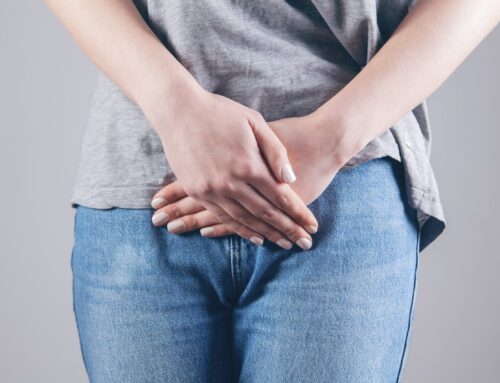Ahhhh…. Poop!
When we were babies, everyone paid close attention to our poop – how often we went, what color it was, if it was mushy or hard… If baby didn’t poop, baby got tummy rubs or leg bicycles, and occasionally, poor baby got a suppository (speaking from personal experience, I am not sure who was traumatized more, baby or mommy).
However, as we have aged, pooping became taboo. I remember all during my 20 and 30s, the party line to all the boyfriends (and husband) was that I NEVER pooped – I didn’t do that sort of disgusting thing. Now that I am older, wiser, and poop-savvy, I proudly tell anyone who will listen (sorry) that I am a Multi-Daily Pooper of Snakes (my official title).
Why is pooping so important? Besides feeling just great, pooping is a fundamental marker of health.
- We poop out the stuff we don’t need. One of the most crucial parts of pooping is waste and toxin disposal. Waste from our food (things we cannot digest) is removed when we poop. Toxins in our system (environmental chemicals or internally generated toxins) are removed through excrement. Now you may be thinking, why does it matter if I poop once a day or every third day – I’m still pooping and getting out the waste and toxins, right? No, not entirely. When your poop sits in your body, some toxins meant for removal get reabsorbed by the body. Uh oh!
- We poop to make room. Regularly moving things out of the system keeps the whole system working well. It makes sense, right? If the drains are clogged, things are slow, and you can get bloating, indigestion, and reflux. It’s best to keep a move on.
So then, what is the ideal poop? Ideally, we should go every day (yes, every day), and it should be snakes – long, soft but formed. Hard, pellet-like stool generally indicates that the colon has sucked out a lot of water from the poop – either because the poop has been in there too long or you are not getting enough water. Mushy, soft, unformed stools may indicate digestive issues, such as not digesting your food well or your bowels are moving too fast to absorb nutrients adequately.
So how can we get pooping every day?
1. Fiber, fiber, fiber! Getting about 25-30 gm of fiber daily would be best. To give you a rough idea (pun intended) of how much fiber that is, here are some approximations:
- Beans (beans, beans, they are good for your heart…). Beans are a giant powerhouse for fiber! 1 cup of cooked beans (black, pinto, lentils, kidney beans, chickpeas) will have a whooping 12-15 grams!
- Veggies galore! Mix up a variety of cooked and raw veggies. In general, cooked veggies will have a higher fiber content per cup as there is less water.
- 1 cup of raw chopped broccoli has about 2.4 grams of fiber; 1 cup of cooked broccoli has 5.1 grams.
- 1 cup of raw chopped carrots has about 3.6 grams of fiber; 1 cup of cooked carrots has 5.2 grams of fiber.
- Fruits can be a great source of fiber, but many also contain natural laxatives that can help aid in bowel movements. Limit your fruit intake to 1-2 servings per day if you have diabetes or weight issues, as fruit contains more sugar than vegetables.
- Prunes – 8 prunes will have about 6 grams of fiber and contain sorbitol (a natural sugar alcohol) that can soften stools.
- Kiwi fruit – 1 medium kiwi has about 2 grams of fiber, and the green kiwi contains actinidin, an enzyme that can help break down proteins and aid digestion.
- Apples and pears –a medium-sized apple or pear has about 4-5 grams of fiber. These are high in soluble and insoluble fiber and contain pectin that can soften stool. Try to choose organic so you can enjoy the whole fruit, skin included.
What if you don’t like beans or can’t eat that much veggies??
You can help to supplement (although not replace) with some high fiber content little gems:
- 1 tablespoon of flaxseed has about 3 grams!
- 1 tablespoon of chia seed packs 5.5 grams!
Tips on increasing fiber – work your way up! Allow your digestive system to get used to the fiber to minimize the bloat of ingesting too much fiber at once.
2. Hydration! Most people do not get nearly enough water. Inadequate hydration means your colon must pull whatever water it can from your poop, creating those hard, ball-like stools. In general, you want to aim for half your body weight in ounces of water. This general rule of thumb does not apply to those with heart, kidney, or liver issues, for which too much volume can be problematic. It also does not apply to people who have electrolyte imbalances. If you have any of these conditions, please consult your healthcare provider.
3. Movement. Remember those baby tummy rubs and bicycles??? The same thing is essential – you must move your belly to get those bowels moving!
- Walking is one of the best things to get your bowels moving. I like yoga and standing side crunches.
- Self-abdominal massage: This is great if you are limited with exercise or have chronic constipation. About 30-60 minutes after eating, lying down on your back with your knees bent:
- Take both hands below your belly button and apply gentle pressure, pulling up toward your ribs. Repeat 5-10 times.
- Take both hands on your sides above your hip bones and apply gentle pressure, moving forward toward your groin (over and down your hip bones). Repeat 5-10 times.
- With a fist, start at your right hip bone and apply gentle pressure, moving up toward your right ribs, then across the top of your abdomen toward your left ribs, then down to the left hip. Repeat 5-10 times.
Tips: If you have any inflammatory bowel disease, surgical issues, or back issues, ask your healthcare provider before you try this. Also, this should not cause significant pain– if it does, lighten the pressure or discuss it with your healthcare provider.
For more useful information on functional holistic health, you can visit our FREE video library here.
About the Author:
Dr. Eri Shimizu is a board certified in Internal Medicine Doctor and soon will be certified through the Institutes of Functional Medicine. She earned a Bachelor of Science in Environmental Bioengineering from the University of Hawaii at Manoa and graduated summa cum laude from Creighton University Medical School. She completed her Internal Medicine residency at UCLA and worked at a Los Angeles county hospital. In 2012, she returned to Hawaii and served as a Hospitalist at Maui Memorial Medical Center. Maui is now home with her husband, two children, and a fighting fish named Rainbow.
Schedule a FREE Functional Medicine Health Consult with Dr. Eri.








